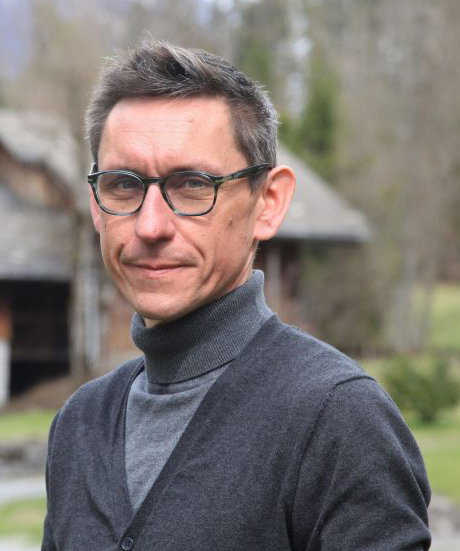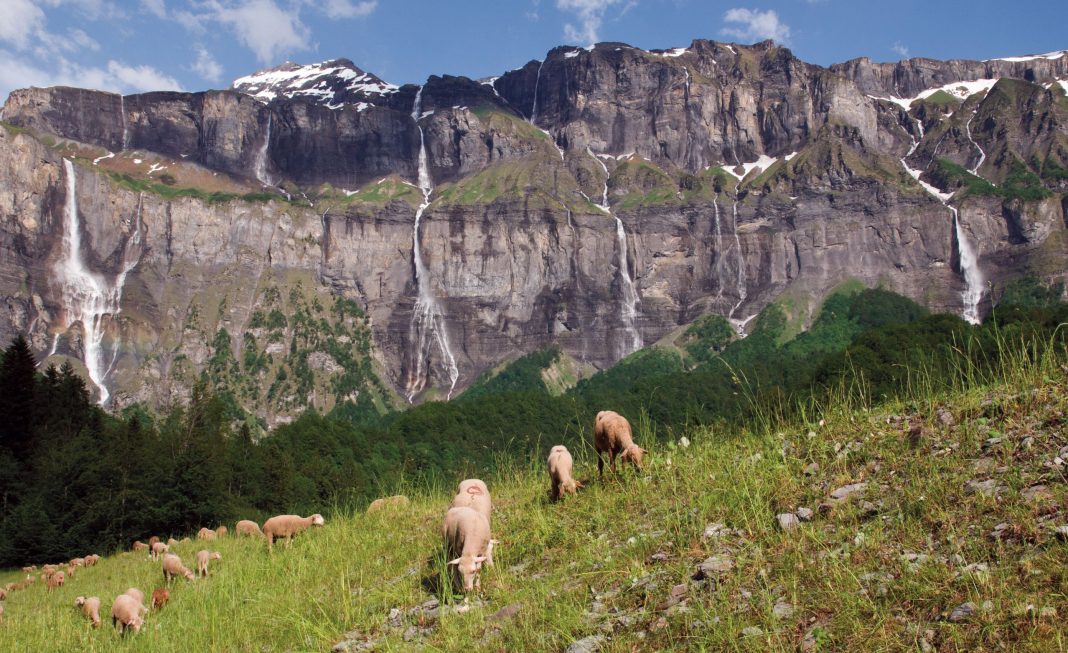Operation Grand Site was launched in the 90s – but put on hold following geological accidents in the 2000s. Since 2016, it has been relaunched with the objective of obtaining the Grand Site de France label!
“The area surrounding the Grand Site of Sixt-Fer-à-Cheval is a natural and cultural treasure of Haute-Savoie. It covers a part of the Nature Reserve, the Cirque du Fer-à-Cheval, the famous Cascade du Rouget waterfall, Sales waterfall, the trails of Anterne, and so much more.” explained Mathieu Battais, project manager from the Grand Site de Sixt-Fer-à-Cheval joint association. ” We are applying for this label because we are committed to improving and protecting this remarkable land, in a sustainable way. The unique heritage of this place depends on its beautiful, uniqueness and identity”.

Mathieu Battais, project manager at the Grand Site de Sixt-Fer-à-Cheval joint association.
5 questions for Mathieu Battais
What does the Operation Grand Site mean for Sixt-Fer-à-Cheval?
Mathieu Battais: The Operation Grand Site was initially launched in the 1990s but suspended following geological accidents in 2000. We relaunched this project in 2016. We would like to show our committment to improving and protecting the remarkable land of Sixt-Fer-à-Cheval, in a sustainable way. To begin working on this action plan for the territory, the Ministry of Ecology must first validate our eligibility for the Grand Site de France (GSF) label.
How is Sixt-Fer-à-Cheval able to obtain this label of excellence?
Mathieu Battais: Thanks to the unique heritage of the area due to its beauty, uniqueness and identity. A Grand Site is an exceptional, breath-taking place with iconic landmarks which are themselves already classified. This is the case for Sixt Fer-à-Cheval which is in fact already a member of the GSF network: the nature reserve is one of the biggest in France, the two glacial cirques, including the famous Cirque du Fer-à-Cheval (classified in 1925) and the 30 waterfalls, including the Cascade du Rouget (classified in 1914). These natural sites are so attractive that they require stringent management and measures of protection to ensure the balance between nature, tourism and life for the locals remains.
The procedure for obtaining this label is very long, 6 years. Where are you in this process today?
Mathieu Battais: The first step of defining the issues and goals has been validated. The second step is now underway: diagnostic, study, ideas for the action plan and future organisation. We are going to draw up an assessment in order to ensure all the different elements are considered, before handing in our application. We will have to show that the project is underway and produce proof of the first outcomes. Therefore, we are not ready to submit our application just yet. We will agree upon the right moment to do so with the Ministry.

What are the benefits of being a Grand Site de France for your territory?
Mathieu Battais: Besides the recognition, this project could lead to a greater influx of visitors – more than 350,000 in the summer -, it will enable us to educate, improve the welcome for visitors, tourist offers, services, and also to redevelop the accommodation and shops in the centre of the village.
Will Sixt-Fer-à-Cheval be the first Grand Site de France in the Rhône-Alpes region?
Mathieu Battais: As far as I know, it will be the first of the Alpine territory and in Rhône-Alpes; in Auvergne, the Puy de Dôme already has this label. We will be joining the very well-known sites like the Pont du Gard, the Pointe du Raz or the Ardèche Gorges, which have since become fully-fledged tourist destinations.
Interview conducted by Laure Béchade

